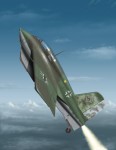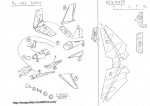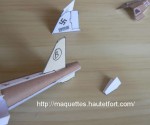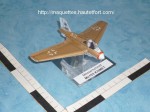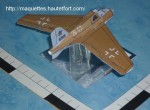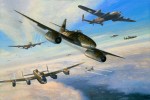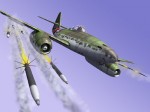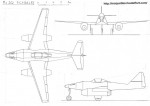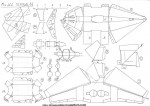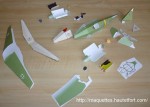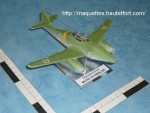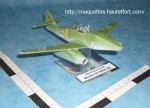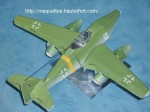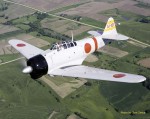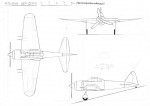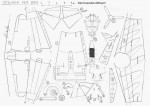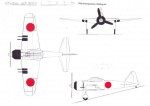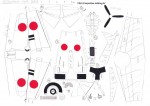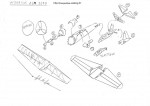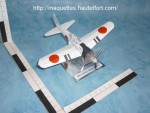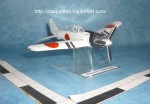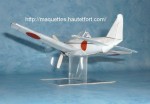Le Messerschmitt Me 163 Komet (Comète) fut le seul avion-fusée de chasse opérationnel. Il requit un long développement et entra dans la guerre d'une manière très limitée seulement en 1944.
Les opérations commencèrent en 1944 avec une unité créée spécialement, le JG 400. Comme prévu, l'avion était simplement intouchable et pendant un temps les pilotes de chasse alliés ne surent pas quoi faire. Quant aux tourelles des bombardiers, elles ne tournaient pas assez vite pour le suivre. En fait l'avion montait plus vite que les adversaires ne descendaient pour l'intercepter. Mais sa vitesse élevée posait le problème qu'il n'y avait pas d'arme réellement efficace suffisamment rapide pour abattre le bombardier avant de le dépasser : le pilote n'avait pas le temps de viser.q
Rapidement, les pilotes alliés remarquèrent le temps très court du vol avec le moteur allumé. Ils attendaient simplement et, dès que le moteur s'était éteint, ils l'attaquaient. D'autre part, ils identifièrent les terrains d'où il opérait, et commencèrent à lui tirer dessus après l'atterrissage. Plus d'avions étaient perdus qu'il n'était possible d'entraîner de pilotes, aussi un grand réseau de Me 163 ne put-il pas exister.
The Messerschmitt Me 163 Komet (Comet) was the only aircraft rocket operational fighter. He sought a long development and entered the war only a very limited way in 1944.
The operations began in 1944 with a specially created unit, the JG 400. As expected, the plane was simply untouchable and for a time allied fighter pilots did not know what to do. As for the turrets of the bombers, they were not turning fast enough to follow. In fact the plane climbed faster than the opponents did not descend to intercept it. But its high speed was the problem that there was no really effective weapon fast enough to kill the bomber before exceed: the pilot had no time to aim. Quickly, allied pilots noticed the time very short flight with the engine running. They were just waiting and as soon as the engine was turned off, they attacked him. On the other hand, they identified the land where he worked, and began to shoot him after landing. More planes were lost that it was possible to train pilots, also a large network of Me 163 could it not exist.
Pour plus d'infos sur cet appareil voir le lien / For more information about this device see the link:
http://www.avionslegendaires.net/messerschmitt-me-163-komet.php
Pour télécharger le plan 3 vues, des pièces noir et blanc et en couleur et le schéma de montage du Me163 Komet au 1/66 en pdf / To download the 3 sights plan, black and white pieces and in color and the installation diagram of Me163 Komet in 1/66 pdf, CLIQUER ICI
Photos d'une maquette construite en septembre 2010/ Photos of a model built in September 2010
CONSIGNES DE CONSTRUCTION :
- Il n'y a pas de train d'atterrissage sur cette maquette.
BUILDINGS INSTRUCTIONS :
- There is no landing gear on this model.
